Visualizing the invisible: class excursions to ignite children's enthusiasm for microbes
- PMID: 32406115
- PMCID: PMC7264897
- DOI: 10.1111/1751-7915.13576
Visualizing the invisible: class excursions to ignite children's enthusiasm for microbes
Abstract
We have recently argued that, because microbes have pervasive - often vital - influences on our lives, and that therefore their roles must be taken into account in many of the decisions we face, society must become microbiology-literate, through the introduction of relevant microbiology topics in school curricula (Timmis et al. 2019. Environ Microbiol 21: 1513-1528). The current coronavirus pandemic is a stark example of why microbiology literacy is such a crucial enabler of informed policy decisions, particularly those involving preparedness of public-health systems for disease outbreaks and pandemics. However, a significant barrier to attaining widespread appreciation of microbial contributions to our well-being and that of the planet is the fact that microbes are seldom visible: most people are only peripherally aware of them, except when they fall ill with an infection. And it is disease, rather than all of the positive activities mediated by microbes, that colours public perception of 'germs' and endows them with their poor image. It is imperative to render microbes visible, to give them life and form for children (and adults), and to counter prevalent misconceptions, through exposure to imagination-capturing images of microbes and examples of their beneficial outputs, accompanied by a balanced narrative. This will engender automatic mental associations between everyday information inputs, as well as visual, olfactory and tactile experiences, on the one hand, and the responsible microbes/microbial communities, on the other hand. Such associations, in turn, will promote awareness of microbes and of the many positive and vital consequences of their actions, and facilitate and encourage incorporation of such consequences into relevant decision-making processes. While teaching microbiology topics in primary and secondary school is key to this objective, a strategic programme to expose children directly and personally to natural and managed microbial processes, and the results of their actions, through carefully planned class excursions to local venues, can be instrumental in bringing microbes to life for children and, collaterally, their families. In order to encourage the embedding of microbiology-centric class excursions in current curricula, we suggest and illustrate here some possibilities relating to the topics of food (a favourite pre-occupation of most children), agriculture (together with horticulture and aquaculture), health and medicine, the environment and biotechnology. And, although not all of the microbially relevant infrastructure will be within reach of schools, there is usually access to a market, local food store, wastewater treatment plant, farm, surface water body, etc., all of which can provide opportunities to explore microbiology in action. If children sometimes consider the present to be mundane, even boring, they are usually excited with both the past and the future so, where possible, visits to local museums (the past) and research institutions advancing knowledge frontiers (the future) are strongly recommended, as is a tapping into the natural enthusiasm of local researchers to leverage the educational value of excursions and virtual excursions. Children are also fascinated by the unknown, so, paradoxically, the invisibility of microbes makes them especially fascinating objects for visualization and exploration. In outlining some of the options for microbiology excursions, providing suggestions for discussion topics and considering their educational value, we strive to extend the vistas of current class excursions and to: (i) inspire teachers and school managers to incorporate more microbiology excursions into curricula; (ii) encourage microbiologists to support school excursions and generally get involved in bringing microbes to life for children; (iii) urge leaders of organizations (biopharma, food industries, universities, etc.) to give school outreach activities a more prominent place in their mission portfolios, and (iv) convey to policymakers the benefits of providing schools with funds, materials and flexibility for educational endeavours beyond the classroom.
© 2020 The Authors. Microbial Biotechnology published by John Wiley & Sons Ltd and Society for Applied Microbiology.
Conflict of interest statement
None declared.
Figures

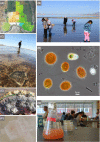

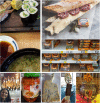




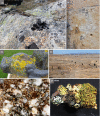



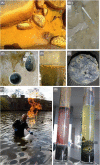


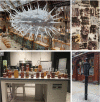
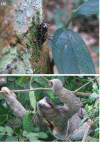

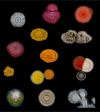


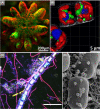
Comment on
-
A Statement on the Appropriate Administration of Tafamidis in Patients With Transthyretin Cardiac Amyloidosis.Circ J. 2019 Dec 25;84(1):15-17. doi: 10.1253/circj.CJ-19-0811. Epub 2019 Nov 16. Circ J. 2019. PMID: 31735731
References
-
- Anderson, D.C. , and Hairston, R.V. (1999) The Winogradsky column and biofilms models for teaching nutrient cycling and succession in an ecosystem. Am Biol Teacher 61: 453–459.
-
- Antunes, A. , Stackebrandt, E. , and Lima, N. (2016) Fuelling the bio‐economy: European culture collections and microbiology education and training. Trends Microbiol 24: 77–79. - PubMed
-
- Araújo, J.P.M. , and Hughes, D.P. (2019) Zombie‐ant fungi emerged from non‐manipulating, beetle‐infecting ancestors. Curr Biol 29: 3735–3738.e2. - PubMed
-
- Arce‐Rodríguez, A. , Puente‐Sánchez, F. , Avendaño, R. , Libby, E. , Rojas, L. , Cambronero, J.C. , et al (2017) Pristine but metal‐rich Río Sucio (Dirty River) is dominated by Gallionella and other iron‐sulfur oxidizing microbes. Extremophiles 21: 235–243. - PubMed
Publication types
MeSH terms
Substances
Grants and funding
LinkOut - more resources
Full Text Sources
Medical
Miscellaneous

